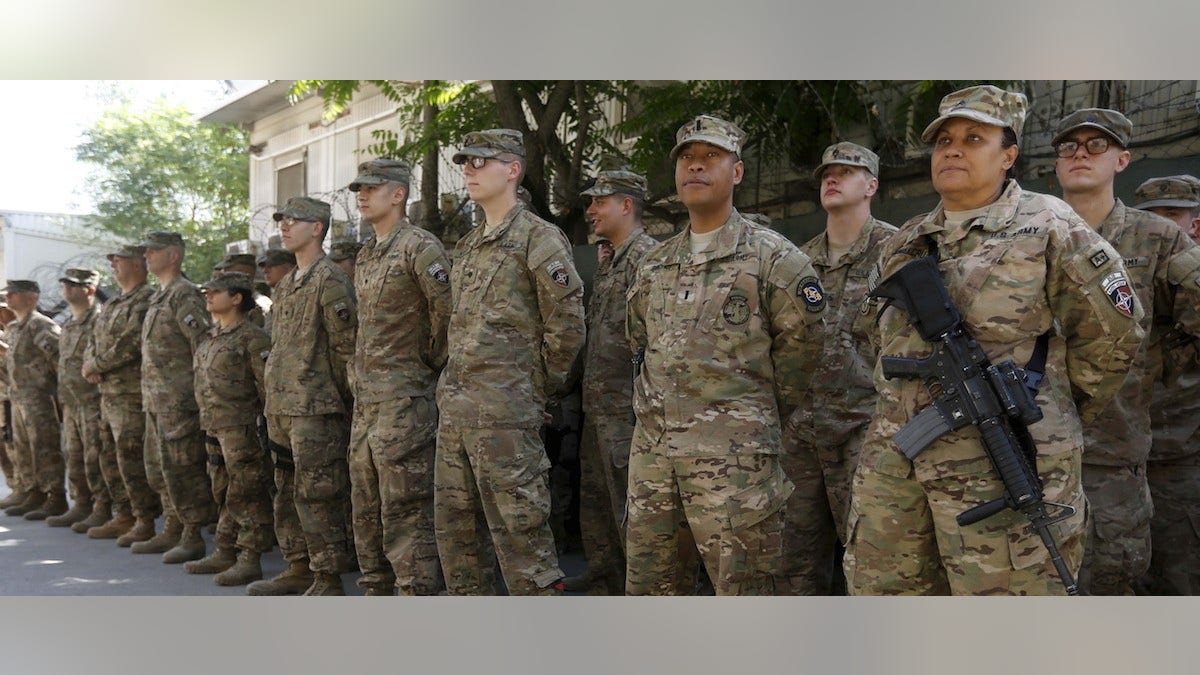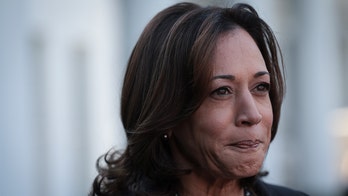
U.S. troops attend a ceremony to commemorate Memorial Day in Kabul, May 25, 2015. Memorial Day is observed annually in the U.S. on the last Monday of May to honor the nation's fallen members of the military. (REUTERS/Omar Sobhani)
The Obama administration is cutting the military down to size,and those cuts are far more expansive than mandated bysequestration, reflecting a deliberate strategy toslash the military.
Brookings Institution senior fellow MichaelO’Hanlon wrote an op-ed for The Wall StreetJournal Wednesday arguing that while theArmy doesn’t necessarily need to growsubstantially, it should not be further cut in the midst ofpotential crises.
As stated clearly in the 2012 Defense Strategic Guidance andreiterated in the 2014 Quadrennial Defense Review, the officialpolicy of the Obama administration is that the U.S. military shouldno longer be able to conduct “large-scaleprolonged stability operations.†In other words, theObama administration has considered dropping down to 380,000active-duty soldiers. As O’Hanlon pointed out, those numbersare less than half as many from the Reagan administration and also100,000 fewer than during the Clinton administration.
Sequestration is one thing. Calling for a smaller standing armyis another, O’Hanlon argued.
A possible reason for bringing down the size of the standingArmy is that operations are shifting away from intensive, boots onthe ground operations. Technological development is making it muchmore feasible to wage war via drones and other devices.
But putting too much stock in high-tech ventures is a mistake,according to O’Hanlon.
“With defense budgets declining, Chinarising, and high-tech frontiers beckoning, the temptation is againto put all of our strategic eggs in the baskets of cyberoperations, high-tech air and sea operations, robotics, spacetechnologies and special forces,â€O’Hanlon wrote. “All areimportant and should be pursued in certain ways. But historysuggests they will not be enough.â€
Large-scale operations would definitely be required in the eventof additional aggression directed by the Kremlin against Balticstates, or in the case of serious conflict between North and SouthKorea. But the military isn’t just used as acombat force. Other crucial missions include stabilization, reliefprovision in the event of natural and humanitarian disasters andeven peace enforcement.
“It is one thing for President Obama to tryto avoid more Mideast quagmires on his watch,â€O’Hanlon noted. “It is quiteanother to direct the Army not to be ready for the plausible rangeof missions that history, as well as ongoing trends in demographicsand technology and global politics, counsels us toanticipate.â€
The Heritage Foundation noted in its report on U.S. militarystrength released Wednesday that the services are quicklyapproaching one-war capability, instead of the usual standard ofsimultaneous deployment in two arenas. Meanwhile, threats fromRussia, China, North Korea and Afghanistan and Pakistan-basedterrorism are on the rise. (RELATED: Report: US Military Strength In Deep Decline As ThreatsRise)
Still, the situation is not overly dire. The Global Firepowerindex places the U.S. at a comfortable firstplace in terms of military strength.




